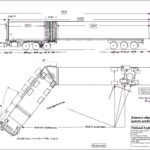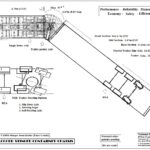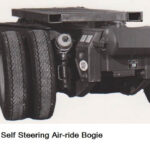Improving Vehicle Maneuverability and Safety
Introduction
In the world of fleet operations, maximizing vehicle maneuverability and ensuring driver safety are paramount. One technology that has proven to be a game-changer in this regard is the rear steer axle. By allowing the rear wheels to actively participate in steering, these axles enhance vehicle agility and control, particularly in tight spaces and challenging driving conditions. In this article, we will explore several case studies highlighting successful implementations of rear steer axles in fleet operations, showcasing the tangible benefits and real-world applications of this technology.
Case Study 1: Enhancing Urban Delivery Efficiency
In a bustling urban environment, the efficient delivery of goods is essential. Company XYZ, a leading logistics provider, faced significant challenges when maneuvering their delivery trucks in congested city streets. By retrofitting their fleet with rear steer axles, they witnessed remarkable improvements in vehicle maneuverability. The rear steer axles allowed their trucks to navigate narrow alleyways and make sharp turns with ease. As a result, their delivery efficiency increased, reducing overall delivery times and enhancing customer satisfaction.
Case Study 2: Enhancing Safety in Construction Sites
Construction companies often face demanding conditions when operating heavy-duty vehicles on job sites. Company ABC, a renowned construction firm, recognized the need for improved safety measures to protect their operators and equipment. By integrating rear steer axles into their fleet of dump trucks, they achieved enhanced maneuverability and control, even in challenging terrains. This significantly reduced the risk of accidents and equipment damage, ensuring a safer working environment for their personnel.
Case Study 3: Optimizing Port Terminal Operations
Port terminals are bustling hubs of activity, requiring precise maneuvering of trucks for efficient cargo handling. Global Shipping Inc., a leading shipping company, implemented rear steer axles in their terminal trucks to streamline their operations. The rear steer axles enabled their drivers to negotiate tight corners and maneuver through crowded spaces effortlessly. This resulted in improved cargo handling efficiency, reduced congestion, and minimized downtime, ultimately boosting overall terminal productivity.
Case Study 4: Enhancing Waste Management Efficiency
Waste management companies face unique challenges when navigating residential areas and narrow streets. Waste Solutions Ltd., a prominent waste management provider, sought to optimize their fleet operations to improve efficiency and reduce collection times. By equipping their garbage trucks with rear steer axles, they achieved remarkable improvements in maneuverability. Their trucks could now access previously inaccessible areas, reducing the number of collection trips and optimizing routing. This led to significant cost savings and increased operational efficiency.
Conclusion: Embracing the Potential of Rear Steer Axles
These case studies exemplify the transformative impact of rear steer axles in fleet operations. Whether it’s improving delivery efficiency in urban environments, enhancing safety on construction sites, optimizing port terminal operations, or streamlining waste management, the rear steer axle has emerged as a vital technology. Its ability to enhance vehicle maneuverability and safety is unparalleled, making it an indispensable tool for fleet operators across various industries.
Ready to explore the potential of rear steer axles for your fleet? Contact us now to learn how this innovative technology can revolutionize your operations. Our team of experts is ready to provide tailored solutions, ensuring optimal maneuverability, enhanced safety, and improved efficiency for your fleet.
Remember, rear steer axles are not just a technology upgrade; they are a strategic investment that can unlock new opportunities for your fleet operations. Embrace the power of rear steer axles today and gain a competitive edge in the world of fleet management.













